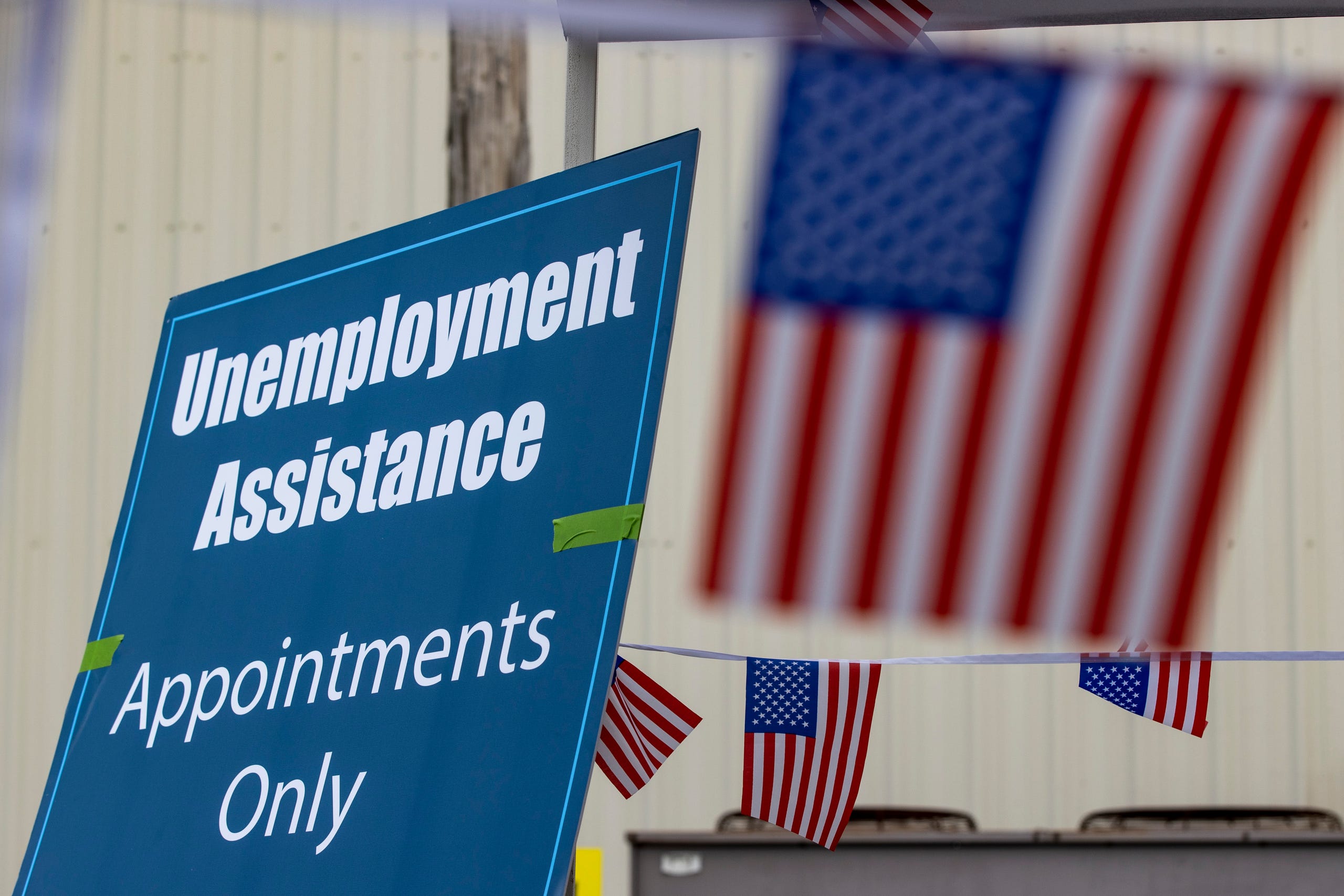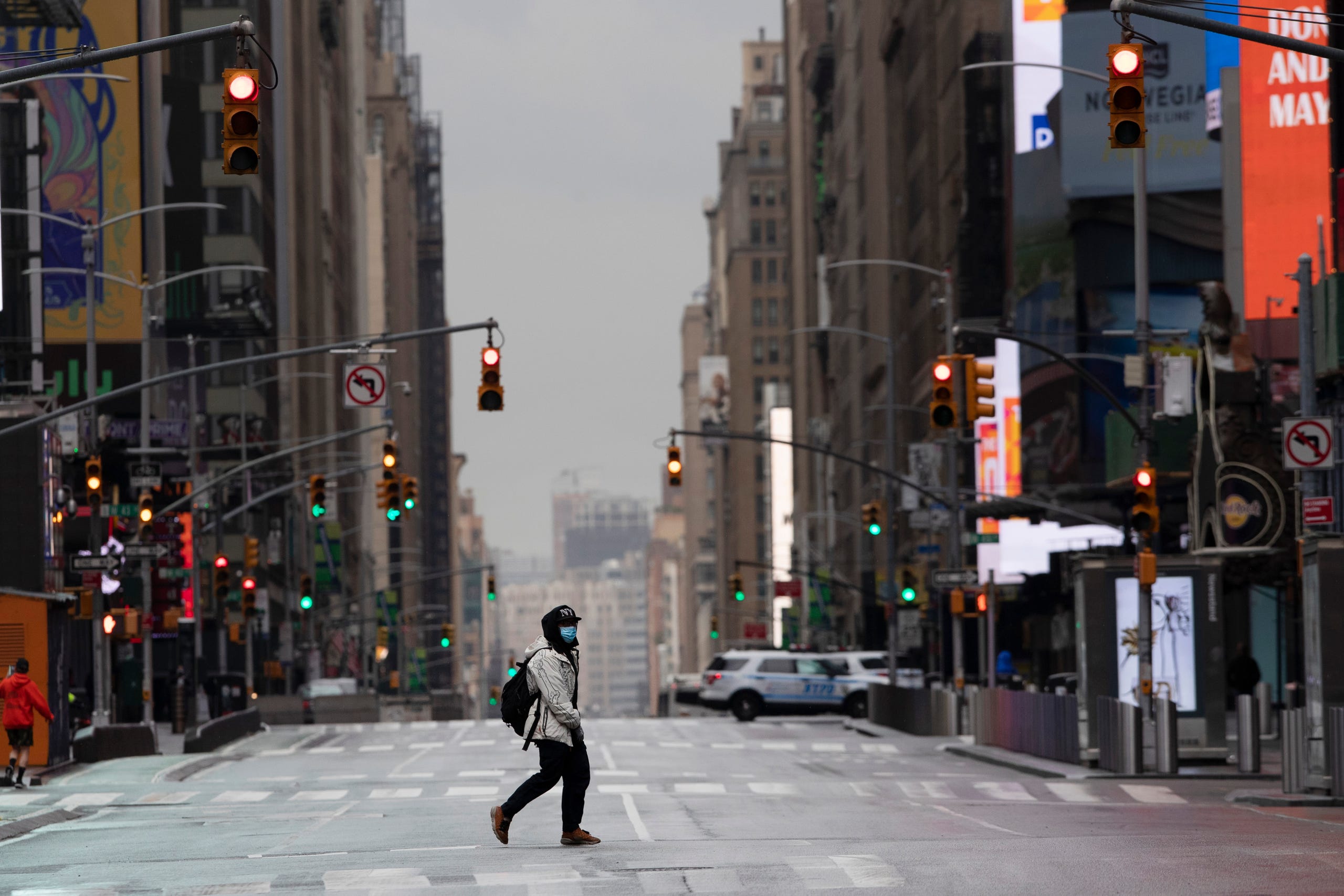New York's economic engine before the pandemic — have been slow to regain more than 700,000 jobs lost in COVID-19's wake.
Six months after the start of the nationwide pandemic, the entire state remains more than 1 million jobs shy of its pre-virus total, showing the most anemic post-COVID outbreak employment growth in the 48 contiguous states. Most of those losses have been in the New York City metro region — which had produced most of the state's growth in recent years.
New York's August private-sector job count of 7.24 million is the lowest on record since August 2012, as the state and the balance of the nation were recovering from the Great Recession in 2008, state records show.
Only Hawaii outpaces New York's 12.4% job decline from August 2019 to August 2020, according to statistics compiled by the U.S. Bureau of Labor Statistics.
"This is the price you pay for the extra restrictions that keep us safe," said Adrian Masters, chairman of the economics department at the State University at Albany.
A high concentration of jobs in the accommodation and food service sector, which is still operating at lower capacities due to gathering and travel restrictions under orders from Gov. Andrew Cuomo, appears to be hampering a post-virus recovery.
Through August, employment in the category was down 39% from February. The loss of 311,000 jobs accounts for more than a quarter of the total state job loss 1,097,000 in the past six months.
The arts and entertainment field continues to reel from limitations from live performances, with nearly one in every two employed in the field — 92,000 people — still jobless six months after Cuomo shut down stages to stem the virus spread in March.
"These industries are very big as a share of jobs," Masters said, compared to, say, Alabama or Texas where the recovery has been stronger and the economic limitations were eased earlier.
Malls, for example, were allowed to open in July, but movie theaters, Broadway shows, and other live performances remain dark, and professional sports are playing in empty stadiums.
Though retail has recovered a portion of the 217,000 jobs lost in the immediate wake of the economic shutdown when New York was thick in the grasp of the coronavirus, the August total remains stubbornly high, 76,000 jobs below February's total and nearly 100,000 below the year-ago total.
"This is a perfect storm for New York state," Masters said.
The state started to reopen non-essential businesses in May, and the slow reopening has been largely successful from a public-health standpoint.
New York has had the most deaths in the nation at more than 25,000, but it has kept its COVID-19 test positivity rate at about 1% for more than a month due to strict mask and social distancing requirements and the restrictions on industries.
"I urge New Yorkers to keep wearing masks, socially distancing and washing their hands, and local governments must continue to enforce state public health guidance," Cuomo said in a statement Sunday.
"By staying vigilant and smart, we can beat COVID together."
But Masters warned that more hits to the state's economy may become.
He warned if New York follows through on its threat to cut aid to municipalities and school districts by 20% due to its own budget woes, a wave of public employee layoffs could be in the offing later this year, compounding an already dim employment outlook.
Unemployment numbers correlate closely with the general trend in the state's first-time unemployment claims tracked since March 14.
Since stay-at-home orders began in mid-March, 3.8 million New Yorkers have filed initial unemployment claims, with the weekly numbers leveling out to 60,000 to 70,000 weekly.
A five-month string of double-digit unemployment rates from April through August is the longest run of its kind since the state began maintaining modern jobless records in 1976, a year in which the state reported double-digit joblessness in 10 of the year's 12 months.
August's unemployment rate of 12.6% is three times the rate from August 2019 and the 3.9% posted this past February, when officials with the Cuomo administration were regularly touting the strength of the state's economy.
Among the other job categories still suffering dramatic shortfalls in employment from pre-COVID numbers are education and health services, down 131,000 to 1.94 million; manufacturing, down 41,000 to 400,000; government, down 100,000 to 1.35 million; and air transportation, down 9,000 to 27,000.
New York City's job total alone is down 602,000 to 3.48 million jobs, a decline of near 15% from February and a number similar to the drop from a year-ago figure.
Only Glens Falls and Watertown have a greater private-sector job decline, 19%, and 15%, respectively, with Long Island at 12% and the lower Hudson Valley at 13%.
Elmira, which has been one of the state poorest performing metro areas from an employment perspective, reported a 2.3%, job loss, the lowest of any of New York's metro regions.
Nationally, a rebound in hiring that began this summer is sputtering amid regional flareups of the coronavirus, signaling that it may be years before the jobs market fully recovers.
Long recovery nationwide
The labor market is expected to rebound faster than it did in the wake of the Great Recession, Sophia Koropeckyj, an economist at Moody’s Analytics, said in a note. But the rebound is slowing, economists say, as some businesses shut their doors amid flareups of the coronavirus in different parts of the country.
A series of headwinds, from the failure of Congress to approve additional financial relief for businesses and the unemployed to a lack of a vaccine, will likely mean it will be another three years before the jobs picture mirrors what the nation experienced before the pandemic.
"Employment gains will stall completely in the fourth quarter,'' Koropeckyj said. "An enduring recovery will not occur until a vaccine is widely available, likely a year from now. Only then will enterprises from restaurants and hotels to public transit to performing arts organizations begin to function normally ... The U.S. will not return to its pre-COVID-19 employment level until the end of 2023."
Charisse Jones of USA Today contributed to this report.
Jeff Platsky covers transportation and the economy for the USA TODAY Network New York. He can be reached at JPLATSKY@Gannett.com and followed on Twitter: @JeffPlatsky




